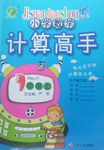
 计算高手系列答案
计算高手系列答案科目:高中英语 来源:期末题 题型:阅读理解
 eting with people.
eting with people.查看答案和解析>>
科目:高中英语 来源:安徽省模拟题 题型:阅读理解
查看答案和解析>>
科目:高中英语 来源:安徽省模拟题 题型:阅读理解
查看答案和解析>>
科目:高中英语 来源:同步题 题型:阅读理解
 ntinued his music study in Indianapolis, Indiana.
ntinued his music study in Indianapolis, Indiana. New York City.Then he
New York City.Then he  and Bess.
and Bess. to know many famous black musicians
to know many famous black musicians查看答案和解析>>
科目:高中英语 来源:广东省月考题 题型:阅读理解
查看答案和解析>>
科目:高中英语 来源:同步题 题型:阅读理解
There are more than one billion people around the world who smoke. Bill Gates, cofounder and
former CEO of Microsoft, wants them all to quit. So does New York City's mayor Michael Bloomberg.
This week, the Gates Foundation, a charity organization set up by Bill Gates and his wife, Melinda,
teamed up with Bloomberg to donate $500 million over the next five years to antitobacco programs.
Bloomberg is no stranger to antitobacco plans. He has been fighting tobaccouse in New York City
for years. In 2002, Bloomberg pushed for a ban on smoking in all New York City restaurants.
Bloomberg's Initiative to Reduce Tobacco Use was created in 2005. It aims to discourage smoking
trends around the world by working to change tobacco's image, protect nonsmokers from secondhand
smoke, and help people quit. Bloomberg gave $ 125 million to start the program. Now, he is adding
another $ 250 million. The Gates Foundation will invest $ 125 million over five years to fight the tobacco
epidemic, including a $ 24 million gift directly to the Bloomberg Initiative.
The money donated by the Gates Foundation will support antismoking efforts in developing countries
where tobacco use is the highest. "Tobaccocaused diseases have become one of the greatest health
challenges facing developing countries," Gates says. In addition to donating to the Bloomberg Initiative,
the Gates Foundation will also help prevent the tobacco epidemic from taking root in Africa. "The
epidemic in Africa is not well advanced," Gates explains. "That means that we can catch it at an early
stage."
Tobaccouse kills more than five million people every year. If the trend doesn't change, more than one
billion people could die of tobaccorelated illnesses this century. Gates and Bloomberg have high hopes to
change these statistics. "Together we can make a clear, measurable difference, not just for ourselves and
our generation, but for the generations that come after us," says Bloomberg.
查看答案和解析>>
科目:高中英语 来源:天津同步题 题型:阅读理解
查看答案和解析>>
科目:高中英语 来源:浙江省模拟题 题型:阅读理解
查看答案和解析>>
湖北省互联网违法和不良信息举报平台 | 网上有害信息举报专区 | 电信诈骗举报专区 | 涉历史虚无主义有害信息举报专区 | 涉企侵权举报专区
违法和不良信息举报电话:027-86699610 举报邮箱:58377363@163.com